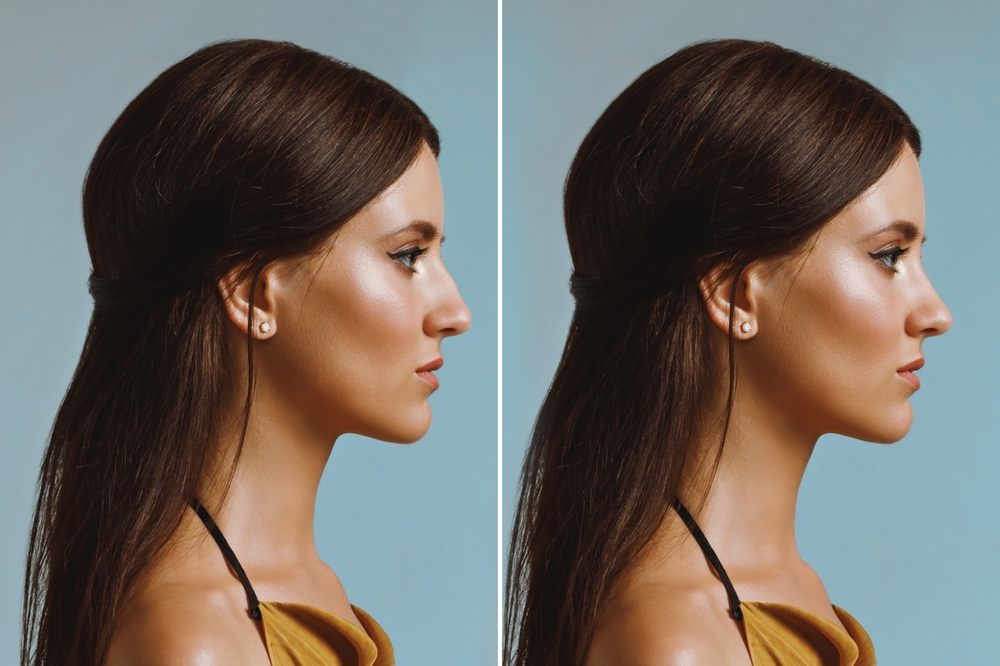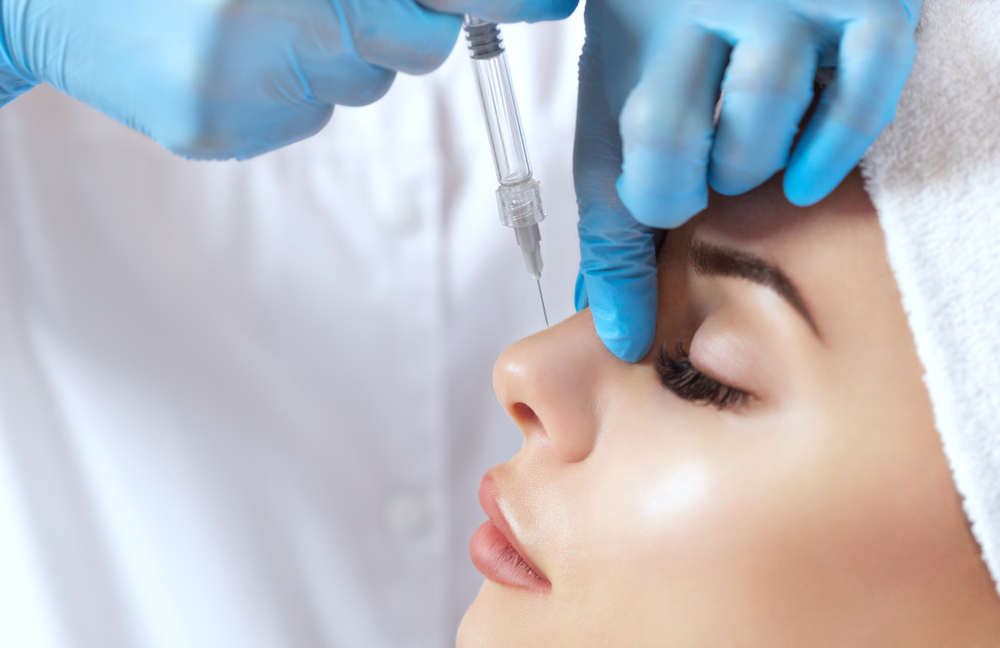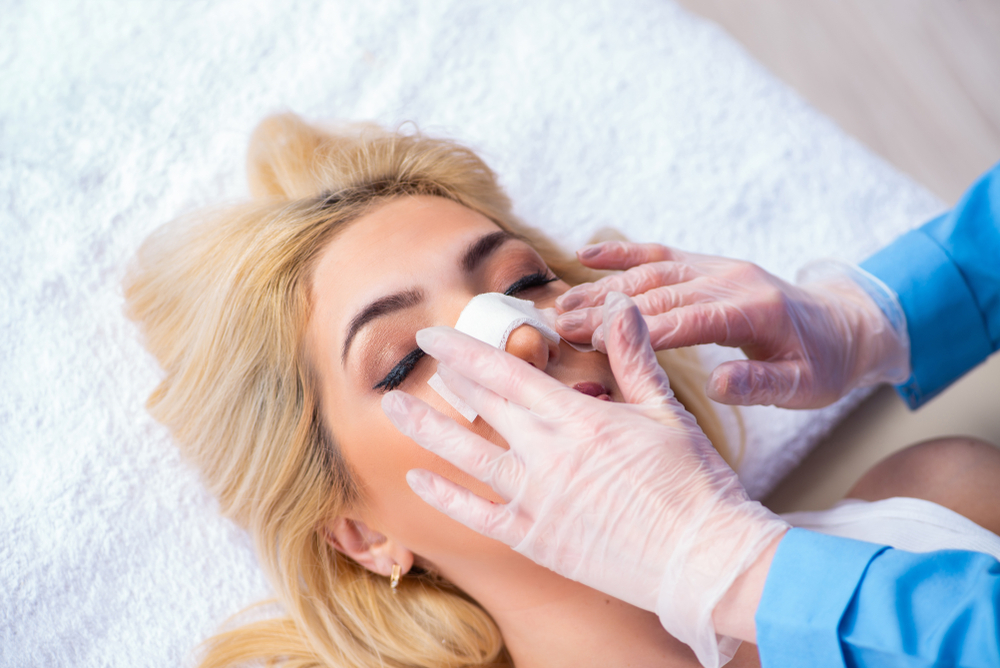How to Prepare Before Rhinoplasty
Before undergoing rhinoplasty, there are a few things that you can do to prepare for the surgery. Here are some tips to ensure that you are ready for your procedure:
Pre-Operative Instructions:
- Follow your surgeon's instructions: Your surgeon will provide you with specific instructions to follow before your surgery. These may include avoiding certain medications, dietary restrictions, and stopping smoking.
- Avoid blood thinners: Avoid taking blood thinners such as aspirin or ibuprofen, as they can increase your risk of bleeding during surgery. Your surgeon will provide you with a list of medications and supplements to avoid.
- Arrange for a ride: Arrange for someone to drive you home after the surgery. You will not be able to drive for a few days following the procedure.
- Stock up on supplies: Purchase all necessary supplies such as gauze, cold compresses, and any prescribed medication before the surgery.
What to Bring to the Surgery Center
- Comfortable clothing: Wear comfortable clothing that is easy to put on and take off. Avoid any tight-fitting clothes that may rub against your nose.
- Entertainment: Bring books, magazines, or a tablet to keep yourself entertained while you wait.
- Insurance information: Bring your insurance information, including your insurance card and any relevant documents.
- Identification: Bring a government-issued identification card, such as a driver's license.
What to Expect on the Day of the Surgery
On the day of the surgery, you will need to arrive at the surgery center at the designated time. Your surgeon will review the procedure with you and answer any last-minute questions you may have. You will then be given anesthesia, which will make you sleep and ensure that you don't feel any pain during the surgery. The surgery will typically take between one to three hours, depending on the complexity of the procedure. After the surgery, you will be taken to a recovery room where you will be monitored until you are ready to go home.
How is Rhinoplasty Performed?
Rhinoplasty is a surgical procedure that can be performed using different techniques. The surgeon will determine the best approach based on the patient's individual needs and desired results. Here are some of the common aspects of how rhinoplasty is performed:
Anesthesia options
Before the procedure, the surgeon will discuss anesthesia options with the patient. The two main options are:
- General anesthesia: The patient is fully asleep during the procedure.
- Local anesthesia with sedation: The patient is awake but sedated, and the nose is numbed with local anesthesia.
Surgical techniques
There are several techniques that can be used for rhinoplasty, including:
- Open rhinoplasty: The surgeon makes an incision on the columella (the tissue between the nostrils) and lifts the skin to access the nasal structures. This technique provides the surgeon with a better view of the nasal anatomy and allows for more precise modifications.
- Closed rhinoplasty: The surgeon makes incisions inside the nostrils, so there are no visible scars. This technique is suitable for patients who require minor changes to their nasal structure.
- Ultrasonic rhinoplasty: This technique uses ultrasonic energy to reshape the nasal bones and cartilage without damaging the surrounding tissues. It is less invasive than traditional rhinoplasty techniques and can result in faster recovery times.
Procedure duration
The duration of the procedure varies depending on the technique used and the complexity of the surgery. On average, rhinoplasty takes 1 to 3 hours to complete.
In Turkey, rhinoplasty is a popular cosmetic surgery procedure that is performed by highly qualified and experienced surgeons. The country's advanced medical facilities, affordable prices, and excellent patient care make it an attractive destination for patients seeking rhinoplasty. In the next section, we will discuss how to prepare for rhinoplasty surgery.
Step-by-Step Explanation of the Treatment
Rhinoplasty is a surgical procedure that can be performed under different types of anesthesia, including local anesthesia with sedation, general anesthesia, or a combination of both. The surgery typically takes 1 to 3 hours, depending on the complexity of the procedure.
Consultation and Planning
The first step in the rhinoplasty process is to schedule a consultation with a qualified plastic surgeon. During this consultation, the surgeon will examine the patient's nose and discuss the patient's goals and expectations for the procedure. The surgeon will also take into consideration the patient's facial features and overall health to determine the best course of action.
Surgery Day Procedures
On the day of the surgery, the patient will be given anesthesia to ensure they are comfortable throughout the procedure. Depending on the surgeon's preferred technique, the surgery can be performed using either an open or closed approach.
During an open rhinoplasty, a small incision is made on the columella, which is the strip of tissue that separates the nostrils. This incision allows the surgeon to lift the skin and soft tissue off the underlying structures of the nose, providing better visualization of the nasal anatomy.
In a closed rhinoplasty, all of the incisions are made inside the nostrils, making them completely invisible from the outside. This technique is preferred for patients who require less extensive surgery.
Once the incisions are made, the surgeon will reshape the bone and cartilage of the nose to achieve the desired results. Depending on the patient's individual needs, this can include removing or adding bone or cartilage, reshaping the tip of the nose, or adjusting the angle between the nose and upper lip.
Post-Operative Care and Follow-Up Appointments
After the surgery is complete, the patient will be taken to a recovery room where they will be monitored closely as they wake up from the anesthesia. Once the patient is alert and stable, they will be allowed to go home.
The surgeon will provide the patient with detailed instructions on how to care for their nose in the days and weeks following the surgery. This may include using cold compresses to reduce swelling, keeping the head elevated to minimize discomfort, and avoiding certain activities that could put stress on the nose.
The patient will also need to attend follow-up appointments with the surgeon to monitor their progress and ensure that the healing process is going smoothly. These appointments may include removing any sutures or nasal packing, adjusting any splints or casts that have been placed on the nose, and addressing any concerns or questions the patient may have.
In Turkey, rhinoplasty is a popular procedure, and there are many experienced and qualified plastic surgeons who perform the surgery regularly. Patients who are interested in undergoing rhinoplasty in Turkey should research their options carefully and choose a surgeon who has a proven track record of success in the field.
Recovery
Recovery Period After Rhinoplasty
Rhinoplasty is a surgical procedure that involves reshaping the nose. The recovery period after rhinoplasty is an essential part of the procedure, as it allows the body to heal properly and reduces the risk of complications. Here are some important things to keep in mind during the recovery period.
Post-operative instructions
Following your surgery, your surgeon will provide detailed instructions on how to care for your nose and promote healing. Some common instructions include:
- Resting with your head elevated for the first week to reduce swelling
- Applying cold compresses to reduce swelling and bruising
- Avoiding strenuous activities, including exercise, for at least two weeks
- Taking prescribed medications as directed
- Keeping the nasal area clean and dry to avoid infection
- Avoiding smoking and alcohol consumption
Follow-up appointments and care
Your surgeon will schedule follow-up appointments to monitor your healing progress and ensure that there are no complications. During these appointments, your surgeon may remove any nasal packing or sutures and provide further instructions on how to care for your nose.
Expected recovery timeline and outcomes
Recovery time varies from patient to patient and depends on the extent of the surgery. Generally, patients can expect:
- Swelling and bruising to subside within two weeks
- Return to work and daily activities within one to two weeks
- Return to exercise and more strenuous activities after four to six weeks
The final results of rhinoplasty can take up to a year to fully appear. However, patients can expect an improved overall appearance of their nose, as well as improved breathing function if the surgery was performed for medical reasons.
In Turkey, the cost of rhinoplasty varies depending on the clinic and surgeon's expertise. However, Turkey is known for providing affordable and high-quality rhinoplasty services, which is why it has become a popular destination for medical tourism. According to a survey by the Turkish Statistical Institute, over 700,000 foreign patients visited Turkey for medical treatment in 2020, with rhinoplasty being one of the most sought-after procedures.
In summary, rhinoplasty is a surgical procedure that involves reshaping the nose to improve its appearance and function. The recovery period after rhinoplasty is crucial to ensure proper healing and minimize the risk of complications. Patients should follow post-operative instructions, attend follow-up appointments, and expect a gradual recovery timeline. Turkey is a popular destination for rhinoplasty due to its affordable and high-quality medical services.
Activities and Things to Avoid After Rhinoplasty
After undergoing rhinoplasty, it is important to follow certain guidelines in order to ensure a successful recovery. The following are some activities and things to avoid after rhinoplasty:
Physical activity restrictions
It is recommended to avoid any strenuous physical activity for at least two weeks after the surgery. This includes activities such as running, weightlifting, and other exercises that can increase blood pressure and heart rate. It is important to gradually increase physical activity over time as instructed by your surgeon.
Avoiding certain foods and beverages
It is important to avoid alcohol, spicy foods, and foods that are difficult to chew for at least a few weeks after the surgery. These can cause inflammation and swelling in the nasal area, which can slow down the healing process.
Tips for a successful recovery
- Keep your head elevated as much as possible to help reduce swelling.
- Apply cold compresses to the surgical area to help reduce swelling and discomfort.
- Take prescribed pain medication as instructed by your surgeon to manage any discomfort.
- Avoid blowing your nose for the first week after surgery.
- Keep the surgical area clean and dry to prevent infection.
- Attend all follow-up appointments and adhere to post-operative instructions given by your surgeon.
It is important to remember that each patient's recovery process will vary depending on individual circumstances. It is essential to discuss any concerns or questions with your surgeon during the recovery period. By following these guidelines and taking proper care, patients can expect to see successful outcomes after rhinoplasty.
In Turkey, reputable clinics and hospitals have dedicated aftercare programs that provide guidance and support throughout the recovery process. Patients can also receive follow-up appointments and personalized care to ensure a smooth and successful recovery.
Activities to Avoid
Physical activity: Avoid any strenuous physical activity, such as exercise or lifting heavy objects, for at least two weeks after the surgery. Light walking is encouraged to help prevent blood clots.
Blowing the nose: Do not blow the nose for the first week after surgery, as this can put pressure on the healing nasal tissues and cause bleeding.
Smoking: Smoking can impair the healing process and increase the risk of complications. Avoid smoking for at least two weeks before and after surgery.
Drinking alcohol: Avoid drinking alcohol for at least two weeks after surgery, as it can increase the risk of bleeding and delay the healing process.
Sun exposure: Avoid prolonged sun exposure or tanning beds for at least six weeks after surgery, as this can cause pigmentation changes in the healing nasal skin.
Wearing glasses: Avoid wearing glasses that rest on the bridge of the nose for at least six weeks after surgery. If necessary, use tape to temporarily secure the glasses to the forehead.
Sleeping in a bad position: Sleep with the head elevated for the first two weeks after surgery to reduce swelling.

Özet
Sonuç olarak, rinoplasti, burnun görünümünü ve işlevini iyileştirebilen popüler bir plastik cerrahi prosedürüdür. Türkiye'de birçok kalifiye plastik cerrah, diğerlerinin yanı sıra açık ve kapalı rinoplasti ve ultrasonik rinoplasti gibi çeşitli cerrahi tekniklerle rinoplasti sunmaktadır. Prosedüre girmeden önce yaş, sağlık ve gerçekçi beklentiler gibi faktörleri göz önünde bulundurmak önemlidir. Hastalar ayrıca rinoplasti ile ilişkili potansiyel risklerin ve komplikasyonların farkında olmalı ve bunları en aza indirmek için adımlar atmalıdır.
Rinoplasti sonrası iyileşme dönemi sabır ve fiziksel aktivite kısıtlamaları ve belirli yiyecek ve içeceklerden kaçınma dahil olmak üzere ameliyat sonrası talimatlara bağlı kalmayı gerektirir. Bununla birlikte, uygun bakım ile hastalar burunlarının görünümünde ve işlevinde önemli bir iyileşme görmeyi bekleyebilirler.
Rinoplasti düşünüyorsanız, prosedürle ilgili kişiselleştirilmiş bilgi ve rehberlik sağlayabilecek kalifiye bir plastik cerraha danışmanız önemlidir. Ayrıca rinoplastinin sizin için doğru olup olmadığını ve hangi cerrahi tekniğin benzersiz ihtiyaçlarınıza ve hedeflerinize en uygun olacağını belirlemenize yardımcı olabilirler.
>




